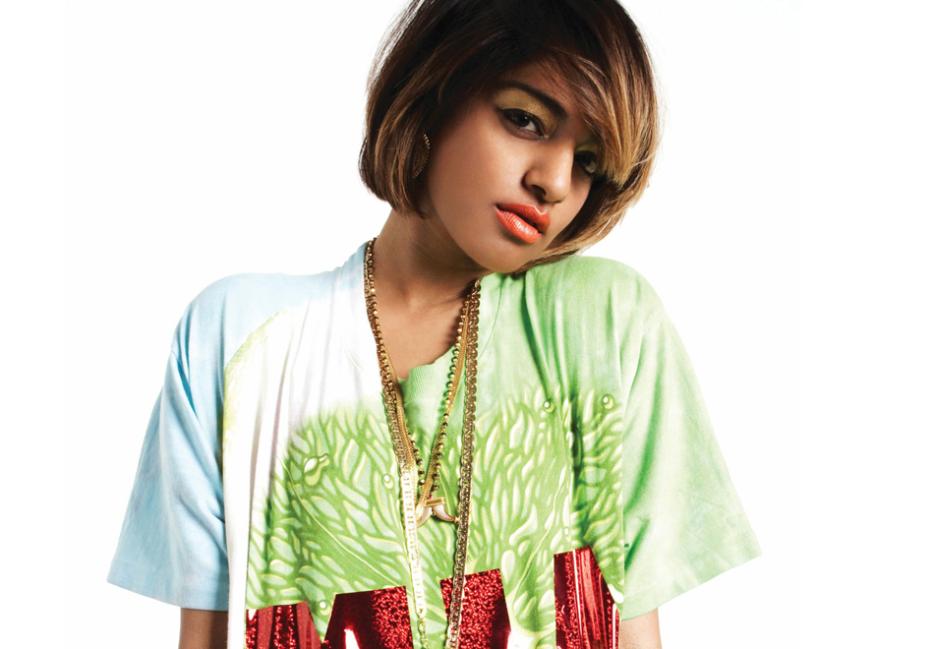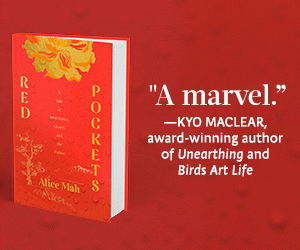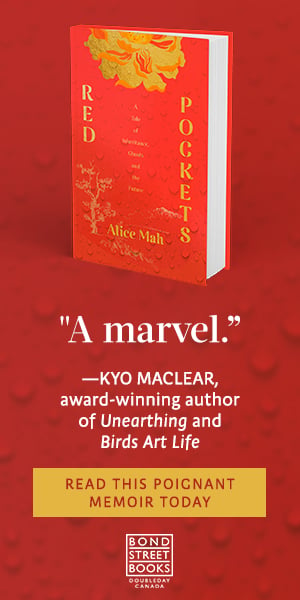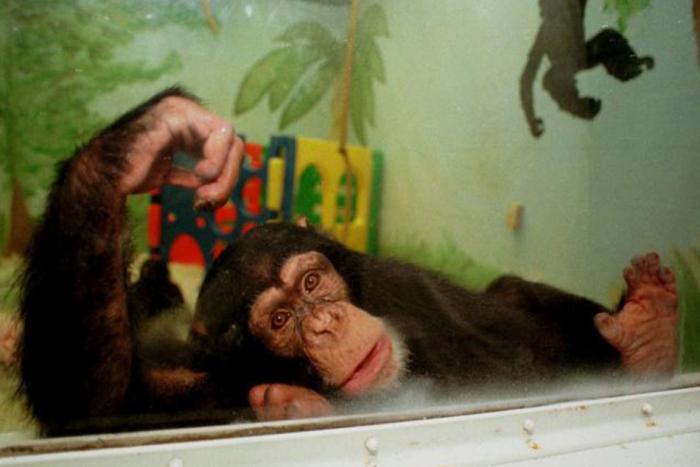Forget KanYeezus: if there’s a poster child for desultory pop music today it’s Maya Arulpragasam, b.k.a. M.I.A. Last week, she released a music video for “Bring The Noize,” a song in which she raps like heavy artillery—alternating quadruple-time phrasing for a chorus that pops off like shots: “d-d-d-d-d-d-dem!”—about freedom and being rich and still pissed off at the banks.
Rage, filtered through visual and sonic pastiches of contemporary subaltern life, has anchored much of M.I.A.’s work since 2005’s still-perfect Arular. The London-born musician began her career as an artist (she attended London’s famed Central Saint Martins), and visual style and statement is crucial to her performance. Arular was plastered with stencils of tanks, AKs, bombs and palm trees; a ribbon of text reading “Fight On!” encircles the dictatorial-style portrait covering Kala. Long before Rihanna performed in front of a Windows 98 screensaver on SNL, M.I.A. was incorporating clip art and digital ephemera into her promo material (most prominently for 2010’s /\/\ /\ Y /\ and Vicki Leekx). And in October, months after middle-fingering America at the Super Bowl, Rizzoli published a volume tracking five years of her flamboyant, Indo-kitsch, collage-style art. Maybe that was M.I.A. trying to remind us that she’s an Artist.
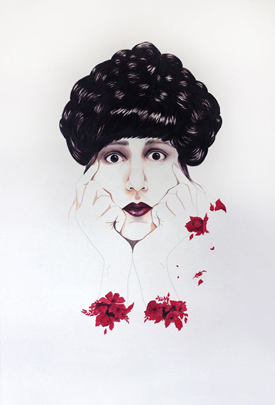
Perera, a Sri Lankan-born OCAD grad, who moved to Canada as a child, is more averse to the idea that she’s operating within the same paradigm as M.I.A.. “We are in enough of an immigrant shit show here in Toronto to not have to feel so othered,” she says, pointing to the descriptor “exotic” that’s often used to describe her work. “Angst will show up, especially in immigrant work, but if it’s pointless you have to take it out.”
Perera says that unlike M.I.A., her own rapidly growing body of work—including this series of mixed-media portraits, titled “Maharanis”—acknowledges and is in defiance of, what she calls, the “Caucasian gaze.” Grayscale photographs of regally posed female friends and family members are painted over with cosmic, divine and and quirky motifs, in a nod to the last maharanis of India and the kitschy, turn-of-the-century practice of photo enhancement in India. “I’m very interested in the body politics, agency and media representation of ethnic women.” Much of her art—which includes researching ethnic pornography—involves flipping ideas of sexuality on its head.
Perera doesn’t buy what M.I.A.’s very clearly trying to sell. “She’s trying to be daring and her message is unresolved—actually, I’m not even sure if there is a message in her work anymore. She really markets and polarizes and oversimplifies her politics, which aren’t always factual. She’s an amazing pop star, but there’s no longer any revolt in her work. What’s the end point? I believe her interpretation of conflict, particularly Tamil Eelam, is a Western representation. We don’t need someone else marketing coloured people with guns; there’s enough of that.”
Sandhu counters that the symbolism-stuffed “Bring The Noize” video falls in line with much of M.I.A.’s “non-linear style.”
“She’s creating a visual collage,” Sandhu says, “and that obviously speaks to a lot of people. I think she’s pulling from what she’s seen, and I wonder how that differs from any other commercial visual artist who is producing for an audience.”
--
Find Hazlitt on Facebook / Follow us on Twitter
Photo #1: Self, Watercolour and Gouache on Paper, 30" x 44" - Artist: Mia Sandhu
Photo #2: Nagina, from the series Maharanis, 22" x 33" Mixed Media on High Quality Inkjet Print - Artist: Rajni Perera


